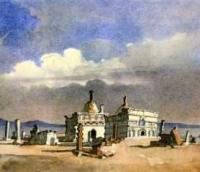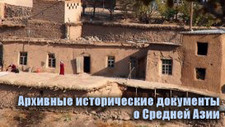You are here
legend of Karakoz - Aytim, Doskeldy.

Forgotten stories of Mangyshlak Peninsula.
"Once Khodja-Akhmed Esauy was sitting in the mosque; after finishing the prayer, he looked at the students leaving it and saw that one of them, holding the Koran on his head, was leaving with his back to the door. Khodja-Akhmed called him and asked:
- "Why are you carrying the Koran on your head?"
- "I consider it indecent to carry it over your shoulders, because it contains God's commandments; I also consider it indecent to turn my back on the teacher from whom I studied the Koran and the rites of religion," the boy answered."
A.K. (Komarov A.V.) "Legends of Adaevites about saints of the Hanafi sect, who lived and died in Mangyshlak." 1873.
Territory of legends - Mangistau.
... Several centuries ago, a Turkmen named Doskeldy lived here - he has already been mentioned - and he had an only daughter, Aytim. Very beautiful, smart and friendly. More than one horseman was in love with the girl, who was called Karakoz, which means black-eyed, for her beauty.
And her eyes were really amazingly large and deep, like an abyss. But, probably, evil spirits were jealous, or maybe they were bribed by some unsuccessful suitor, only Karakoz fell ill, and after some time she died. The grief-stricken father buried his daughter on a high mountain, so that she could see the entire steppe from here.
He called the best craftsmen, who built this tombstone from light and pink limestone, brought from the distant gorges of Karatau. They say that Karakoz, when she was still a little girl, planted a mulberry tree among the rocks, where moisture was barely noticeable.
The tree grew. And after his daughter's death, her father dug a deep well next to the mulberry tree in memory of Karakoz. When the tree grew old and died, a young one was planted... and so it is to this day. Travelers, wanderers, shepherds and caravan drivers - after all, the road passed nearby - always stopped at this place to rest in the shade of the tree and stock up on water.
Everyone, regardless of clan or tribe, remembered the kind Karakoz. She is not forgotten in our time either...
Authority and photos by:
"Steppes Will Revive." Anatoly Kostenko, Esbol Umirbayev. Alma-Ata. "Oner". 1984.
Karakoz Mausoleum is a female grave. There is such a legend. One bay had a beautiful daughter of marriageable age. Many rich suitors wanted his daughter's hand. Matchmakers replaced each other at the bay's house. But the girl's heart belonged to a guy from a simple poor family.
Her father was against this marriage. And the young couple had no choice but to organize an escape. Having learned about the escape, Karagoz's relatives organized a pursuit. Soon the young fugitives were caught. As punishment for theft, the guy was tied to the tail of a spirited stallion and the horse was set free to gallop.
The horse walked for a long time across the steppe, dragging the body of the young man, bleeding. The ground in those places was covered with bloody spots. After a while, mulberry trees with blood-black berries grew there. Having learned about the death of her lover, Karagoz threw herself off a cliff and died. Like tears of inconsolable grief, the spring flows in the place where Karagyoz died - pure and quiet.
It is heard only by those who, thirsty for new impressions, accidentally wandered into these places or, like us, decided to make sure whether the spring really beats here, the mulberry tree grows and the mausoleum stands on the hill. In memory of his daughter, the father built a mausoleum on the hill, on the Death Rock (as the old-timers call it).
The mausoleum stands at a distance from other burials, thereby reminding us that Karagyoz committed suicide. This is customary among many peoples: those who lay hands on themselves are buried separately. There is another legend about a girl of unprecedented beauty named Ayim.
For the beauty of her enchanting black eyes, she was nicknamed Karagyoz. People say that she was one of the first beauties of the village, located not far from the gorge. Apparently, people envied her - an incurable disease overcame her. In inconsolable grief, Karagoz grew a mulberry tree.
Early in the morning she watered the tree from a well dug by her father. But even this did not prevent the premature death of the karaoke beauty. And today, trees branch out in this area, rustling their leaves, telling the babbling spring water about the beauty Karagoz.
The spring water caresses the roots of the mulberry, echoing the rustle of the trees. Here, in the shade of the branchy trees, it is pleasant to relax, drinking hot tea prepared in a road samovar. The steppe dwellers have a good parable-saying about tea: the first sip of road tea moistens the lips, the second makes you forget loneliness, the third explores the stomach, the fourth gives vigor, after the fifth anyone is ready to fight the strongest batyr.
Authority:
Natalia Zaderetskaya "Tupkaragan - the cradle of Mangistau". http://mangystau.info
Photos by:
https://www.t-shevchenko.name/ru/Painting/ExpeditionToKara-Tau1851.html







